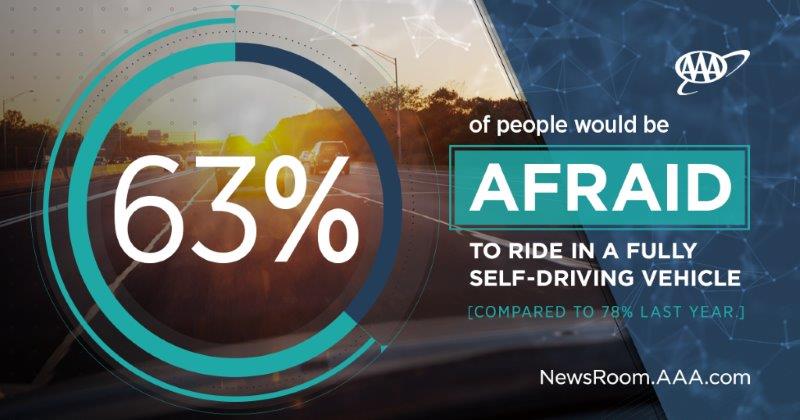BOISE – (January 24, 2018) – No brake pedal, no steering wheel, no problem. More drivers say they wouldn’t be afraid to ride in an autonomous vehicle in AAA’s new survey.
Last year, 78 percent of motorists said they would be afraid to ride in a self-driving car, but this year, that number has dropped to 63 percent, which means an additional 20 million drivers are willing to take part. It’s a significant change that is likely the result of increased public awareness.

“The concept has been fairly well-publicized, and no longer seems like something from the pages of a science fiction book,” says Matthew Conde, public affairs director for AAA Idaho. “It’s a good time for stakeholders to work together to establish a common vocabulary, develop clear safety standards, and set test parameters that move the technology safely forward.”
While fewer motorists are afraid to ride in self-driving vehicles, many are still reluctant to share the road with them. In AAA’s survey, just 13 percent of U.S. drivers say they would feel safer sharing the road with a self-driving car. Nearly half – 46 percent – say they would feel less safe.
Women (73 percent) are more concerned than men (52 percent) with riding in a self-driving car. Millennials are the most trusting of the technology, while Baby Boomers are the least trusting.
“Continued education, exposure and thoughtful research are needed to keep the roads safe while exploring the potential safety benefits and conveniences of self-driving cars,” Conde said.
More than 90 percent of vehicle crashes involve human error, yet nearly three-quarters (73 percent) of U.S. drivers consider themselves better-than-average drivers.
AAA continues to advocate for motorist safety through the ongoing, unbiased testing of automated vehicle technologies. Previous testing of automatic emergency braking, adaptive cruise control, self-parking technology and lane assist systems points to a promising future.
“AAA is pleased to take part in Governor Otter’s recently-appointed Autonomous and Connected Vehicle Deployment Committee,” Conde said. “We’ve got a lot to learn before we turn full-time driving control over to our vehicles, and it’s an exciting time to be involved in the process.”

